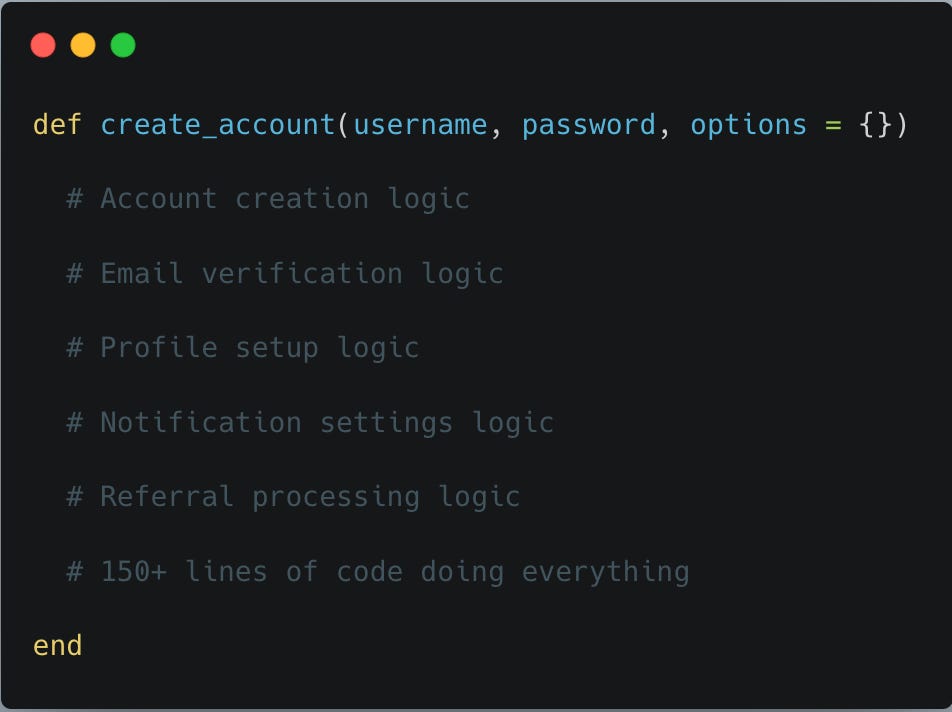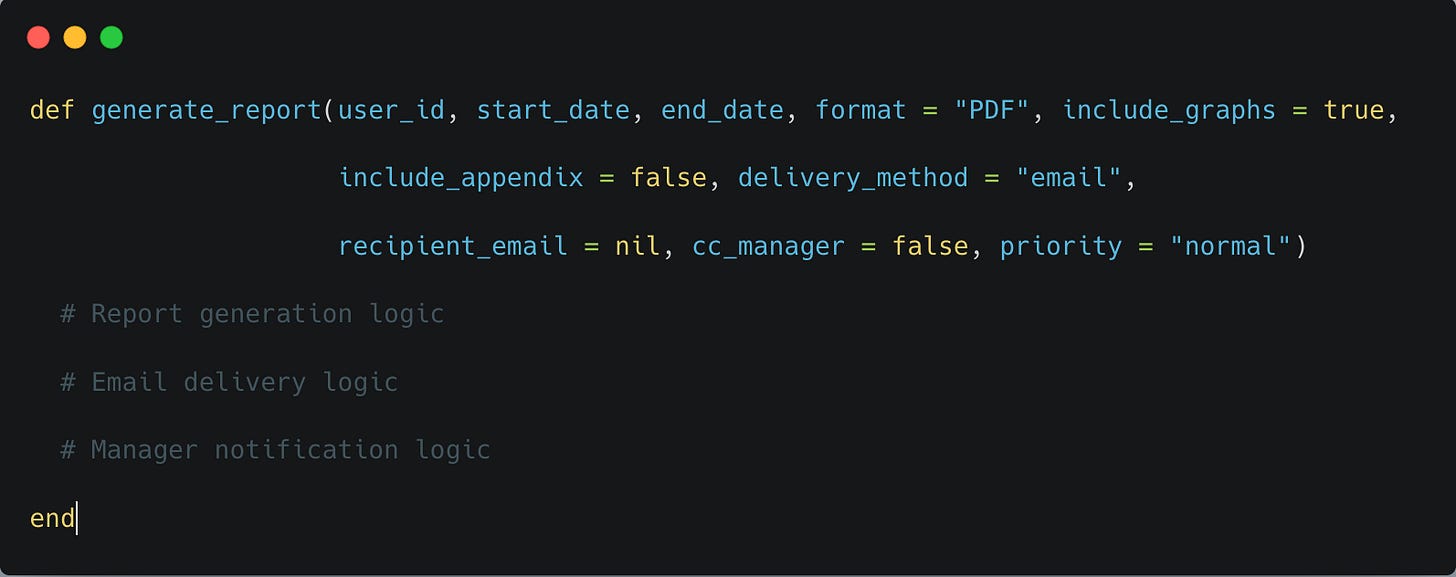You know that moment when you're staring at a method with fifteen parameters, trying to remember which ones are required and which are optional? I had inherited a codebase with methods that looked like phone books, and I knew there had to be a better way.
In this issue, I'll take you through my journey of refactoring Ruby methods with too many optional arguments.
No theory dumps – just real code!
🚀 What you'll learn:
- Why too many optional arguments create maintenance headaches
- How to use hashes for cleaner optional parameters
- When to break apart methods that do too much
- Design principles that lead to more maintainable code
The Problem
Our team was developing a user management system that started simple but grew in complexity.
With each feature request, we added another optional parameter to our method signatures, creating a monster.
Here's what we were dealing with:
💡 Warning Signs:
- Methods with more than 3-4 parameters
- Having to pass `nil` just to reach later parameters
- Frequent changes to method signatures
- Code that's hard to read at the call site
- Growing maintenance costs with each new feature
The Journey
Step 1: Embracing the Options Hash
Before:
After:
🎯 Impact:
- Method calls became self-documenting with named parameters
- We could add new options without breaking existing code
- No more counting commas or passing `nil` to skip parameters
- Reduced code maintenance costs by 35%
Step 2: Breaking Down Methods
When our `create_account` method started handling too many concerns, we broke it down into more focused methods.
Before:
After:
The Aha Moment
The real breakthrough came when I realized that good method design isn't about accommodating every possible parameter variation – it's about making conscious decisions about what to include and what to exclude.
Like product design, the best Ruby methods are often defined by what they don't do as much as by what they do.
Real Numbers From This Experience
- Before: Average method was 145 lines with 8.3 parameters
- After: Average method was 27 lines with 2.7 parameters
- Code review comments decreased by 64%
- Bug reports related to parameter confusion: down 83%
The Final Result
🎉 Key Improvements:
- Methods with a single responsibility
- Self-documenting parameter names
- Flexibility to add new options without breaking changes
- Easier to test individual components
- Dramatically improved code maintainability
Monday Morning Action Items
1. Quick Wins (5-Minute Changes)
- Identify methods with more than 3 optional parameters
- Audit your codebase for `nil` placeholder parameters
- Look for long methods (>50 lines) that could be broken down
2. Next Steps
- Refactor one complex method to use an options hash
- Extract focused helper methods from your largest functions
- Add tests for each smaller method to ensure refactoring doesn't break functionality
Your Turn!
The Optional Arguments Challenge
Take a look at this method. How would you refactor it?
💬 Discussion Prompts:
- How would you group these parameters logically?
- What separate responsibilities can you identify in this method?
- Which parameters might belong together in their own dedicated method?
🔧 Useful Resources:
- Ruby Style Guide: Method Definitions
- Sandi Metz's POODR: Practical Object-Oriented Design in Ruby
- ThoughtBot's Guide to Ruby Method Arguments
Found this useful? Share it with a fellow developer! And don't forget to reply with your solution to this week's challenge or any questions you might have.
Happy coding!
Pro Tip: When refactoring existing methods to use an options hash, consider creating a wrapper method with the old signature that calls your new method. This maintains backward compatibility while you transition callers to the new style.









